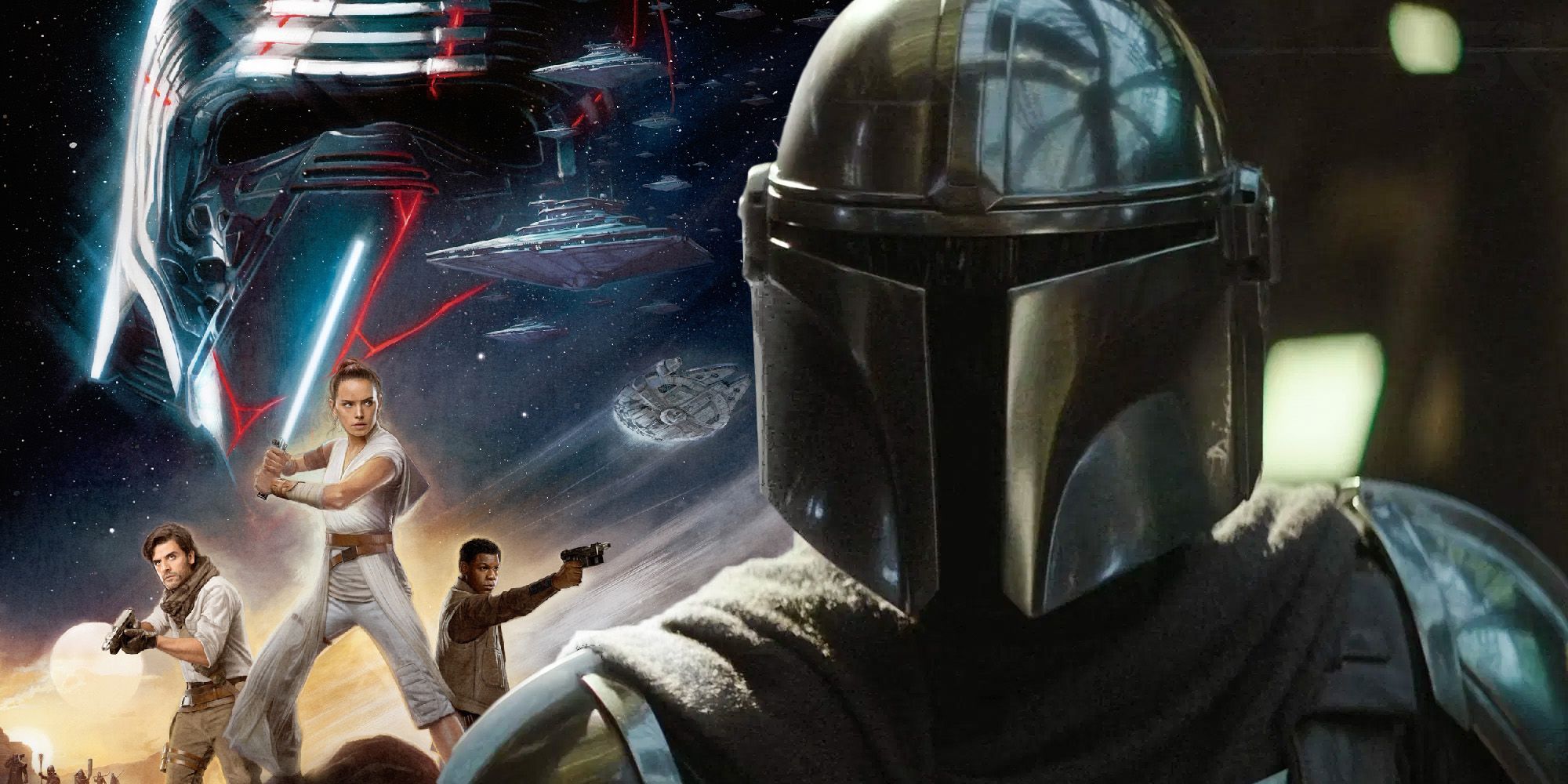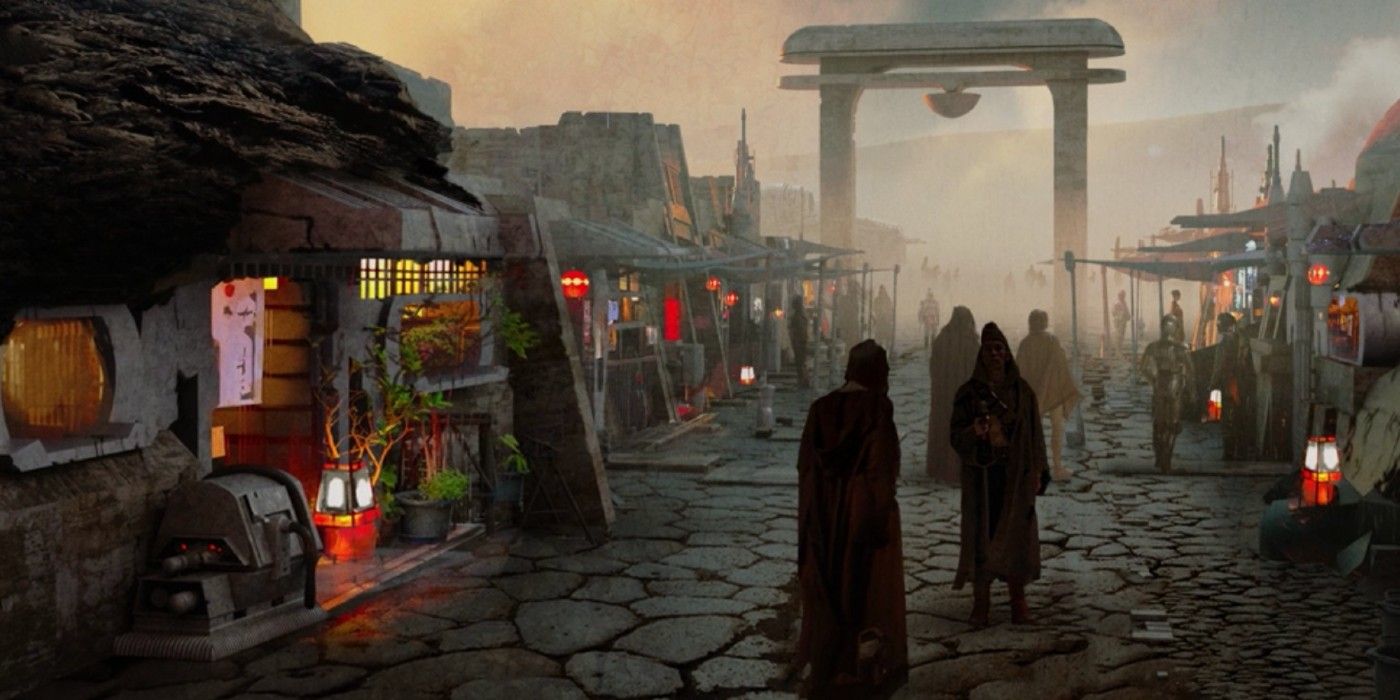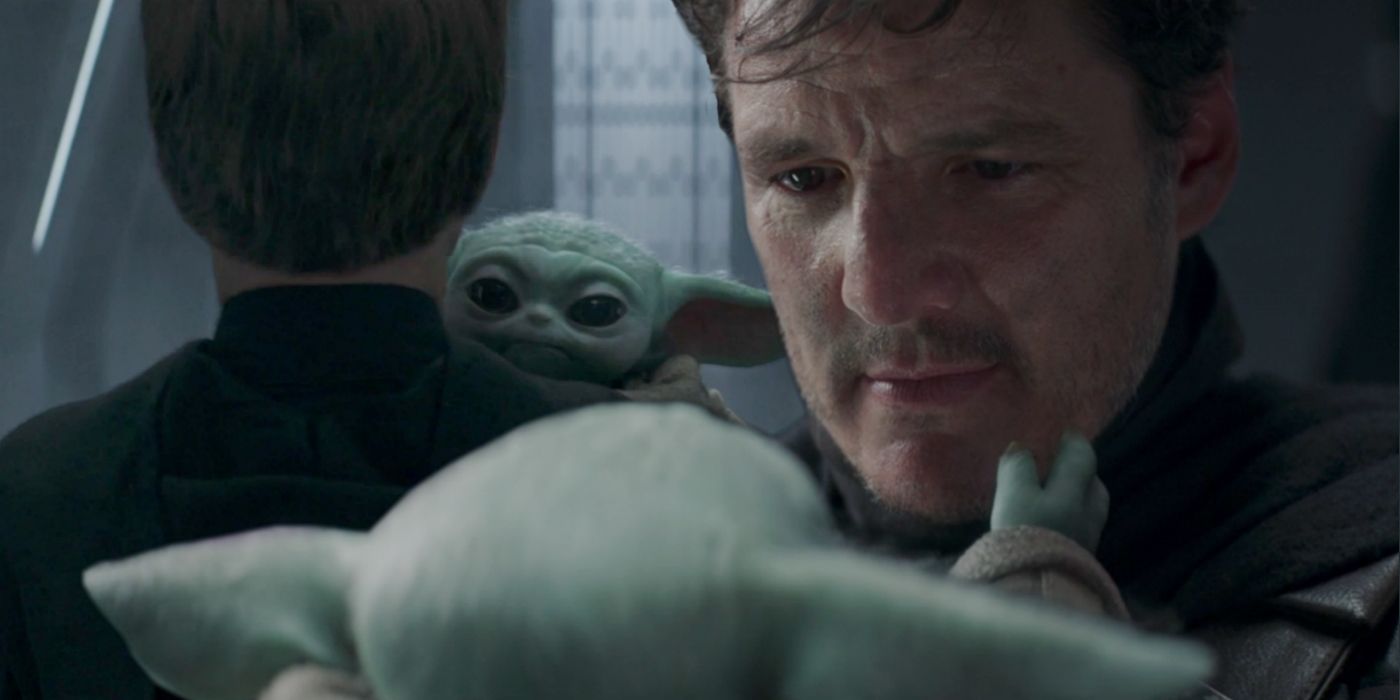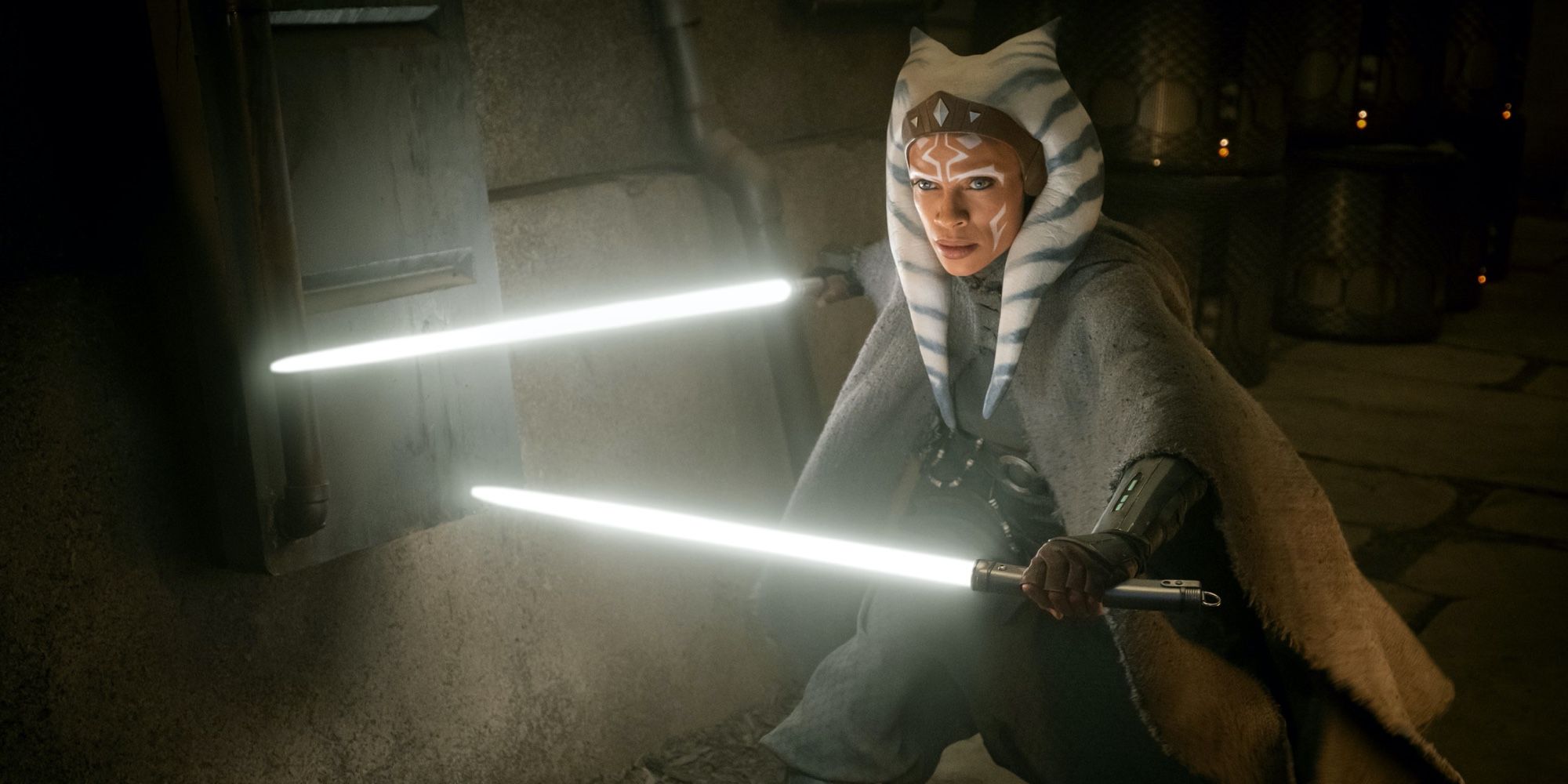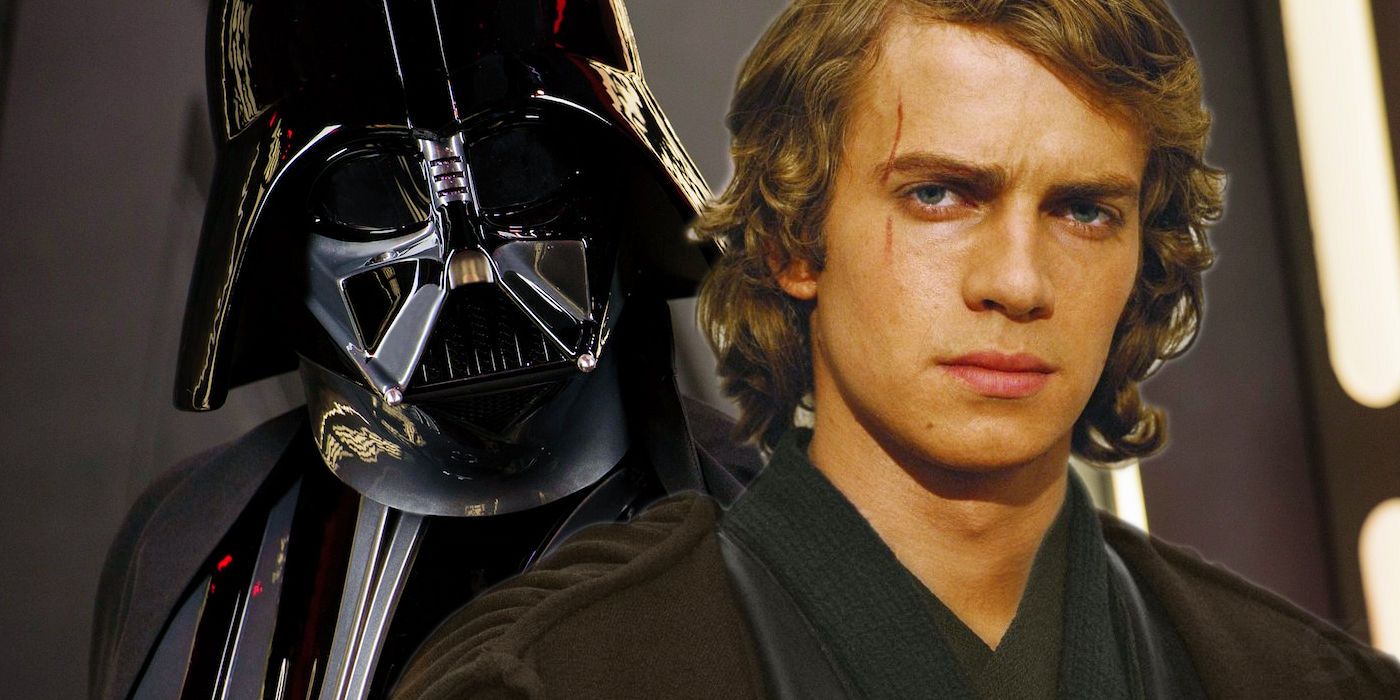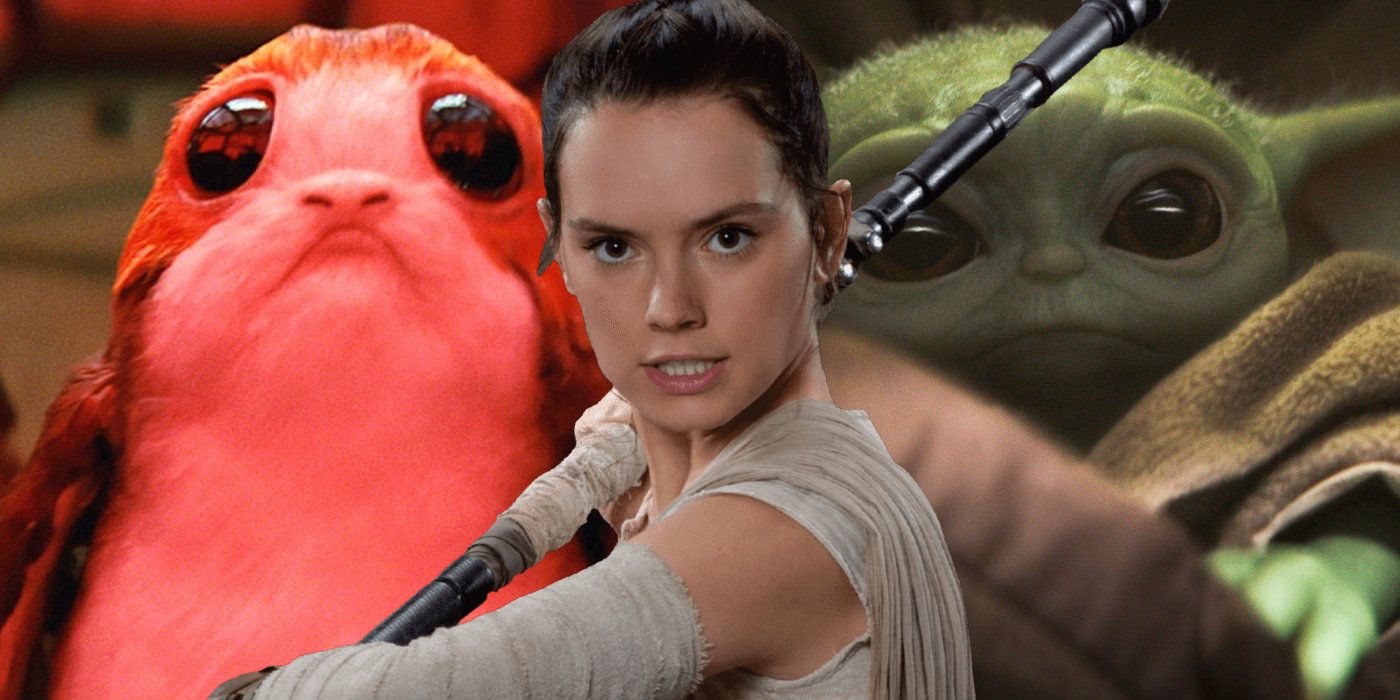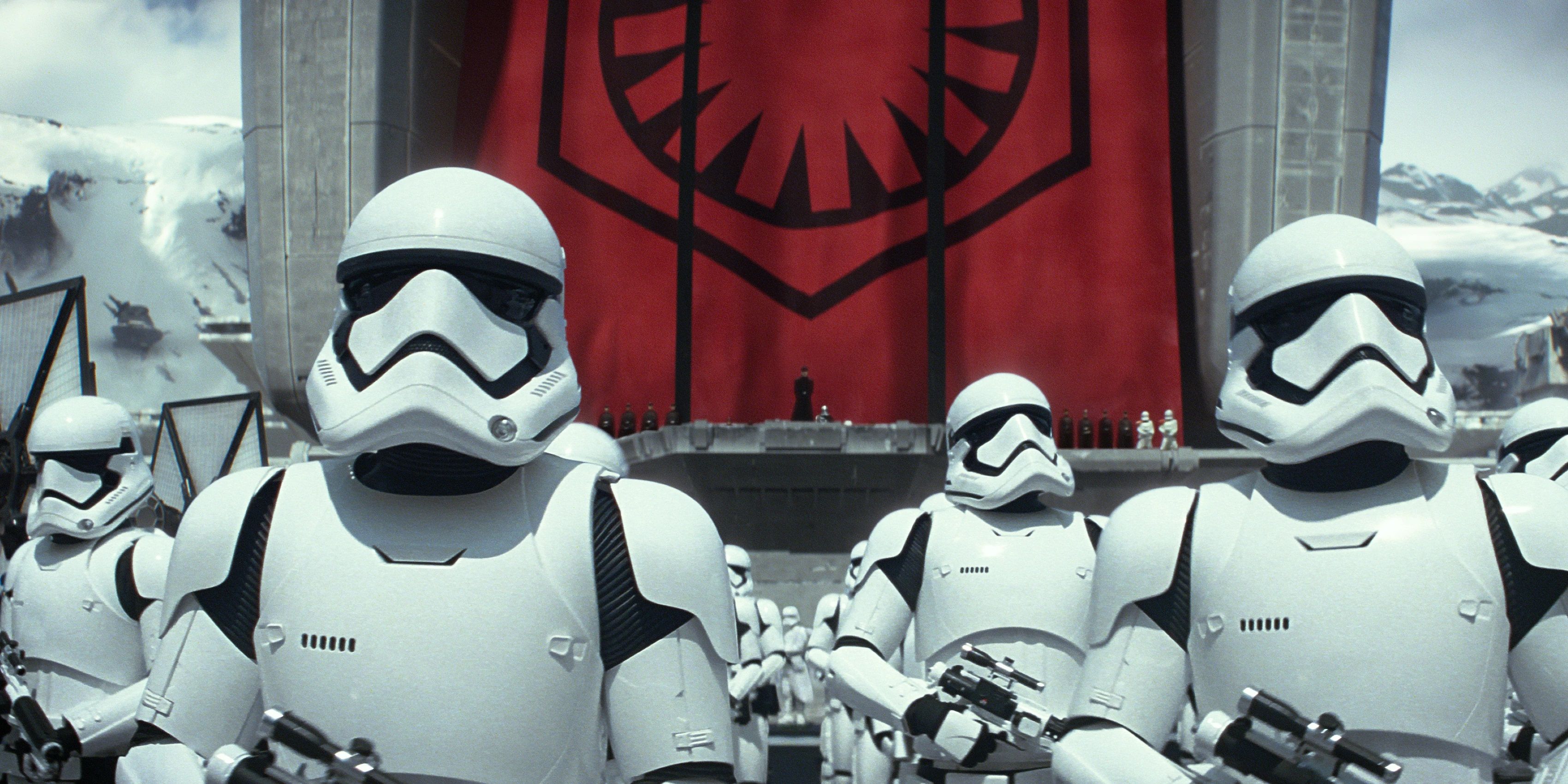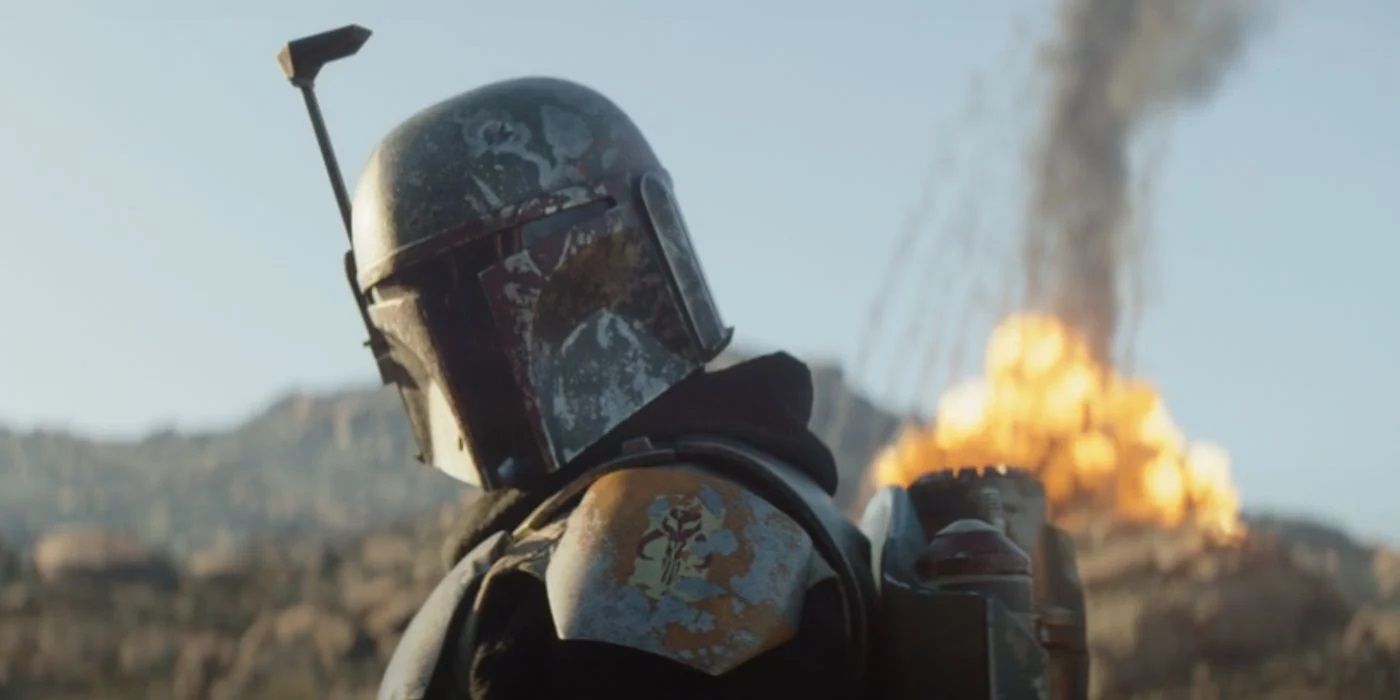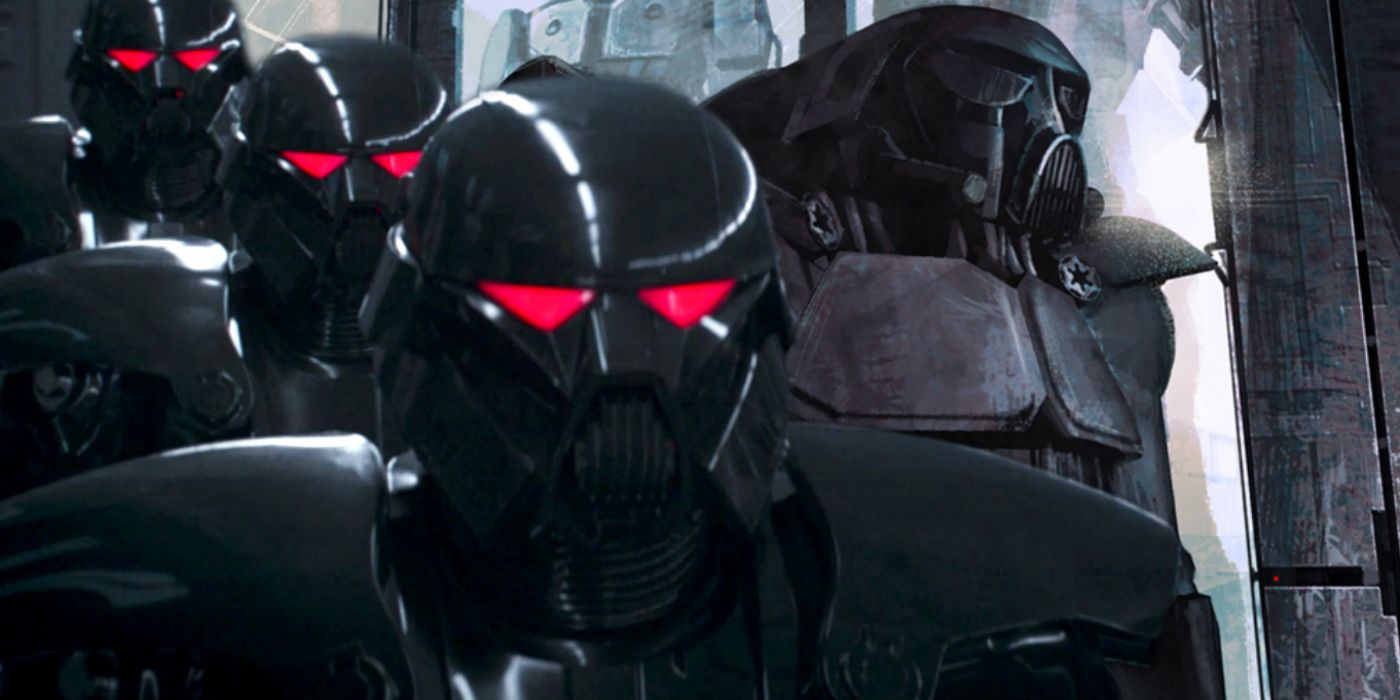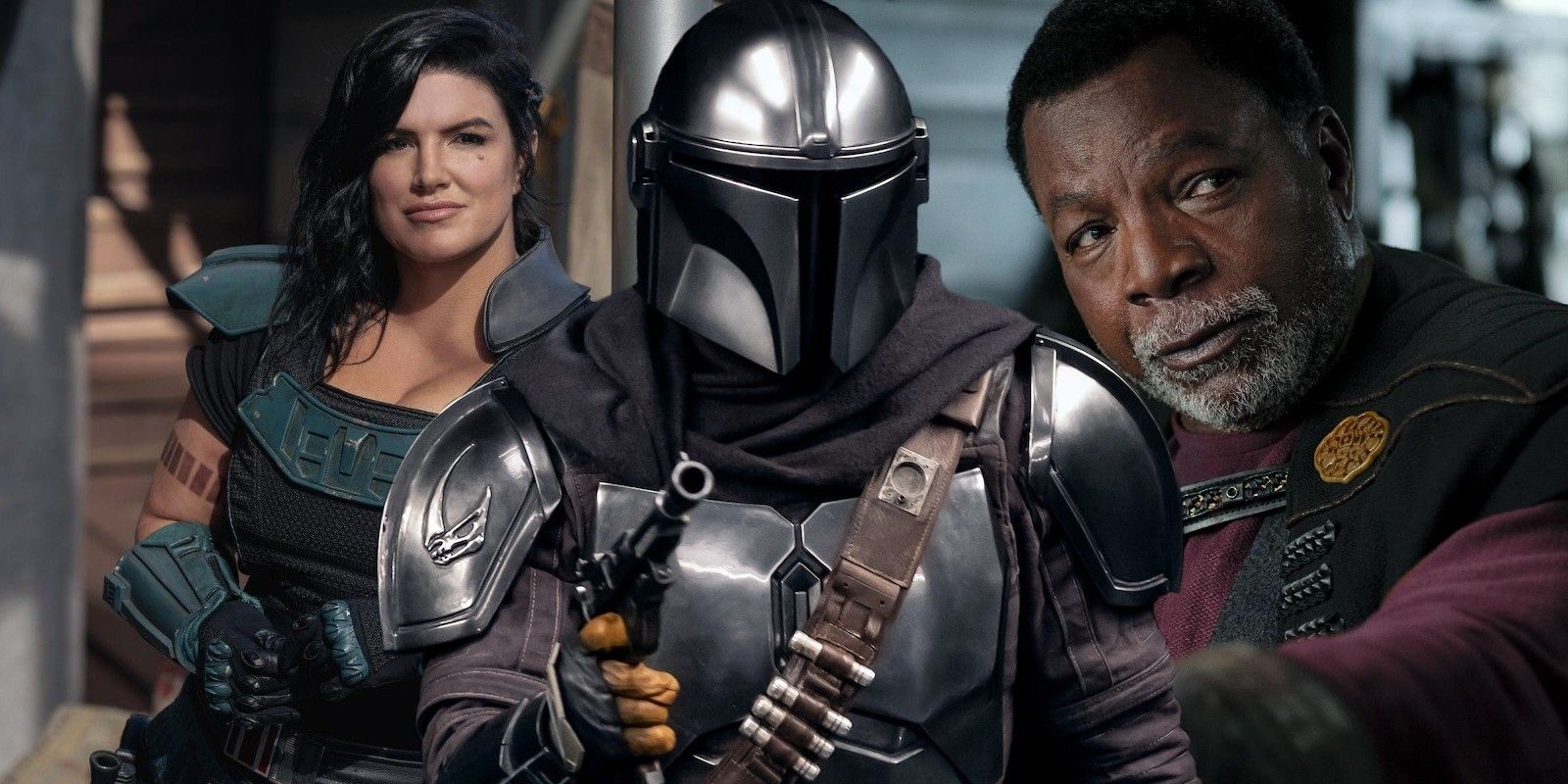The Mandalorian has quickly established itself as the standard-bearer for the Star Wars franchise, largely because of all the ways it succeeds where the sequel trilogy failed. In the wake of the polarized response to Star Wars: The Last Jedi and general condemnation of Star Wars: The Rise of Skywalker, fans of the series found solace in the one show that delivered simple, consistent, quality Star Wars stories. The Mandalorian has shown a new way forward for the franchise beyond theatrical films, and it will likely remain a model for future content over the next few years.
Before discussing what The Mandalorian does better than the sequels, it’s only fair to spend a little time acknowledging what Disney’s films do really well. Star Wars: The Force Awakens is a great, fun movie, if unspectacular in the new ideas department. Rey, Finn, and Poe all come out strong as the series’ new characters, and the balance of nostalgia, fan service, and flashy new action is pulled off beautifully.
The following two films are obviously more contentious, but that doesn’t mean they don’t have their strengths. Many fans view The Last Jedi as one of the best entries in the whole series, praising its more thematically-driven narrative, interesting additions to the Force and Jedi lore, and bouts of gorgeous cinematography. And while The Rise of Skywalker does suffer from too many late reveals and too much information, it still pays homage to all that came before in some fun and stylish ways.
The core issue with the sequels has less to do with their individual merit and more to do with their lack of cohesion with one another. The absence of a singular overall plan for the Star Wars sequel trilogy’s story and the creative dispersion across different writers and directors yielded three films that feel almost entirely different from one another, rather than being three parts of the same whole. As a result, many aspects of the movies suffered. These are all the main ways The Mandalorian succeeded where the Star Wars sequel trilogy failed.
New Star Wars Planets
Star Wars built its universe out of a number of iconic sci-fi worlds – the desert wastes of Tatooine; the inhospitable cold of Hoth; the Oz-like splendor of Bespin’s Cloud City. The sequels fell short notably in this regard, delivering a second-rate Tatooine clone world in Jakku, the universally-hated Canto Bight, and a blur of barely-seen planets in The Rise of Skywalker, among others. There are highlights to be sure, like Luke’s secluded temple on Ahch-To and the visually striking salt fields of Crait, but in general the new worlds of Disney’s trilogy leave a lot to be desired.
The Mandalorian is significantly better in this regard. While Nevarro might not be the most beautiful or unique planet in the cosmos, it has a distinct personality, energy, and culture. Other visited worlds like Trask, Corvus and Morak all make lasting impressions, even if they only appear in one episode of the show. The Mandalorian’s philosophy on new planets isn’t complicated – keep them simple, focus on the details, add some fun visual touches for flair. It’s a philosophy the sequel films could have afforded to stick to as well.
Character Development
Obviously, the casts of The Mandalorian and the sequel trilogy are quite different. The former focuses on Din Djarin and Grogu as the only two real main characters, with a growing number of recurring side characters who pop in and out. The films, on the other hand, have a much larger number of main characters with very clear arcs – Finn, Rey, Poe, Luke, Kylo, Leia, and so on.
So how can it be fair to say that The Mandalorian has better character development, when it doesn’t even have as many core characters? It’s not in terms of quantity or scale that the show excels, but in subtlety and quality. Din doesn’t show a lot of himself to those around him, but the viewer slowly gets more and more peaks into his psyche, background, and motivations as the story progresses. Characters like Boba Fett, Bo-Katan, Cara Dune and Greef Karga don’t have much in the way of revealing soliloquies or giant moments of revelation, but their complexity is built up in earnest, simple, and compelling ways – Cara overcoming her past to rejoin the New Republic; Karga accepting responsibility as a leader in his community; Bo-Katan struggling to balance her pride with her love for her people.
Yes, the sequels have much more literary, large-scale character arcs, and some of them work quite well. Luke’s journey to accepting failure in The Last Jedi is beautifully told, as is Finn’s rejection of fear to serve a greater cause in The Force Awakens, and Kylo’s painstaking rejection of the dark side in The Rise of Skywalker. The problem is that the films’ inconsistencies lead to odd repetition and poor cohesion in the overarching development of their core characters. Finn has essentially the same arc in the first two movies, and none at all in the third. Rose gets written out of the story just as she’s getting established because of sexist fan backlash. Rey’s promising arc of self-fulfillment gets muddled by rapid-fire Emperor Palpatine retconning. The sequels certainly have their moments, but they’re also loaded with numerous flaws of this nature.
Lightsabers, Ships, And Other Space Tech
If there’s one thing The Mandalorian does right, it’s the lived-in look and feel of the Star Wars universe. Every cockpit, docking bay, speeder bike, E-Web blaster, lightsaber blade, and beskar armor plate carry the distinct, industrial-yet-fantastical aesthetic that made the original trilogy so immediately iconic. It’s not just the look either – it’s the sound, and how every piece fits together. From the way the Razor Crest plods through space like a semi-truck to the mechanical buzzes of Ahsoka’s two white lightsabers, every detail feels distinctly and beautifully Star Wars, while still managing to add new, original ideas to the mix.
The sequels do a good bit in the new ideas department, but not all of them are winners. From the aforementioned questionable design of Canto Bight to the occasionally over-choreographed lightsaber battles, the Star Wars aesthetic of the sequels is pretty hit-or-miss. The films’ strongest sci-fi moments come from pieces of the world that were already established – Anakin’s saber, the Millenium Falcon, or the constant glamour shots of X-wing squadrons. Those are all great touches, but they’re more a testament to the old movies than the new.
Respecting The Whole Star Wars Story, Even The Prequels
It’s no secret that the sequel trilogy was designed from the beginning to ignore the prequels as much as possible. After more than a decade of the franchise being ridiculed because of Lucas’s less-beloved trilogy, Disney wanted to make sure Star Wars fans knew right away that the sequels and prequels would be nothing alike. This is most apparent in all the visual homage paid to the original trilogy, but it also extends to questionable narrative decisions, like Anakin barely being referenced at any point.
While the prequels themselves are far from perfect, they’re still an important part of the Star Wars mythos. The Mandalorian pays great respect to the original trilogy, but it also pulls plot points and inspiration from the prequels (Old Republic technology, Jango Fett clone storylines), The Clone Wars and Star Wars Rebels (Bo-Katan and the history of Mandalore), and the sequels as well (the New Republic, allusions to Palpatine’s resurrection and the First Order). By incorporating elements from every segment of the canon, The Mandalorian comes off feeling like a much more complete addition to Star Wars as a whole.
Cute Aliens
This is a minor one, but it’s worth a brief mention. The Last Jedi tried desperately to create the latest, greatest adorable alien craze with the pudgy, penguiny porgs. Some fans came away in love with the squishy little creatures, but most saw them for what they were – an oddly out-of-place bid to sell toys. That’s nothing new for Star Wars, which has always lived off of its merchandising. But there’s a way to do it right, and a way to do it wrong.
Baby Yoda, whose real name is Grogu, occasionally still known as the Child, is the gold medal winner of cute lil’ aliens. His tiny face, slow waddle, and obsession with shifter knobs has captured the hearts of viewers like very little in the pantheon of Star Wars ever has. And yet, through all the cuteness and merchandising opportunities, Grogu remains a compelling character. He quickly became the emotional core of the series, and it will be interesting to see how the show will change in his wake.
The Empire
Both The Mandalorian and the sequel trilogy have the same core antagonist – the remnants of Palpatine’s Galactic Empire. While there are distinct differences between Gideon’s force and the First Order, the Empire keeps many of its core features throughout both. TIE Fighters, Stormtroopers, armored walkers, battleships, and cool black capes all appear in both series, but The Mandalorian does a bit better with its version of the Empire’s remains.
While the First Order is an interesting antagonist in its own right, it’s hurt substantially by the trilogy’s convoluted story. Sith cults, secret planets, fleets of planet-killing Star Destroyers and Sidious clones mostly serve to confuse, rather than amplify, the villainous nature of the Empire. The Mandalorian takes a different approach, showing more of a ground-level picture of the Empire, its galactic impact, and its reaction to defeat. The result is a more intriguing story, and a much clearer picture of who the Imperials actually are and the role they have in the galaxy.
Star Wars Fan Service And Easter Eggs
To be fair, the sequels have their share of applaudable references to past Star Wars stories. Luke staring off into the sunset; the voices of Jedi past speaking to Rey through the Force; many, many shots of X-wings doing various cool things. At times it feels a bit forced, like in Rey’s twin suns ending shot, but generally Disney pulls off the fan service in fun and engaging ways. The Mandalorian isn’t better here because the sequels fan service is bad – it’s better because its own fan service is just that good. Boba Fett alone could be enough to make the case, from his “simple man” line to Slave 1’s sonic charges. Or you could point to Luke Skywalker’s epic rampage through Gideon’s platoon of Dark Troopers. Or how about the entirety of season 2 episode 4, “The Siege,” which is basically a play-for-play recreation of A New Hope’s Death Star escape? And that’s without even mentioning all the Clone Wars characters. Throughout, The Mandalorian balances the best of fan service with stellar original content. It’s that balance that’s made it so universally beloved.
Using Star Wars Legends
Ever since Disney relegated the old Expanded Universe content to the non-canon “Legends” realm, one question has hung over all new Star Wars projects – how much should the new canon take from the old, and which pieces should be kept? The sequels took a good bit of inspiration from Legends, including in their Palpatine cloning plotline, Luke’s reestablished Jedi Order, and a grandson of Anakin Skywalker turning to the dark side. As often as not though, these inclusions caused confusion more than they added value. The Palaptine plotline in particular felt forced and way too late in the series to be revealed. Ultimately, the sequels did a disservice to Legends by taking some ideas but executing them poorly.
The Mandalorian also takes cues from the old Expanded Universe, but it does so more in the details, and to a much more positive effect. Old tidbits of lore and worldbuilding like the nature of krayt Dragons, Jango Fett’s history with Mandalore, and the various generations of Dark Troopers all add to the story in fun and occasionally meaningful ways, without obstructing the new material that’s the real focus. The Mandalorian makes Legends what it should be – a source of positive inspiration, not a roadmap to be followed in fragments.
Diversity
The Force Awakens made moderate waves early on with its casting of a woman and two men of color as its three main protagonists. It was a definitively important step for the franchise, which up until that point had been dominated almost exclusively by the escapades of intergalactic white men. Unfortunately, that promise didn’t carry through the whole trilogy. Finn was given smaller roles in each successive entry, something John Boyega has been particularly outspoken about since. Rose Tico was essentially ousted after one movie due to fan backlash against her, leading to a Rise of Skywalker appearance with barely any lines. The story becomes about Rey and Kylo more than anyone, and while they certainly do better than the prior films, the sequels fall significantly short of truly making Star Wars a franchise for everyone.
The Mandalorian does a step better in that effort. The cast is almost entirely actors of color, with a relatively even split of male and female characters. Greef Karga, Cara Dune, Fennec Shand, Moff Gideon, Boba Fett, and even Din Djarin himself all makeup an ensemble that better reflects the diversity of Star Wars fans than any before in the franchise. These are characters who lead the plot, who are treated with respect, and who aren’t relegated to tiny roles after serving a tokenist purpose. Star Wars still has a long way to go to truly become a series for everyone (background gay characters do not make you progressive, Disney do not make you progressive, Disney do not make you progressive, Disney), but The Mandalorian takes some notable steps in the right direction.

